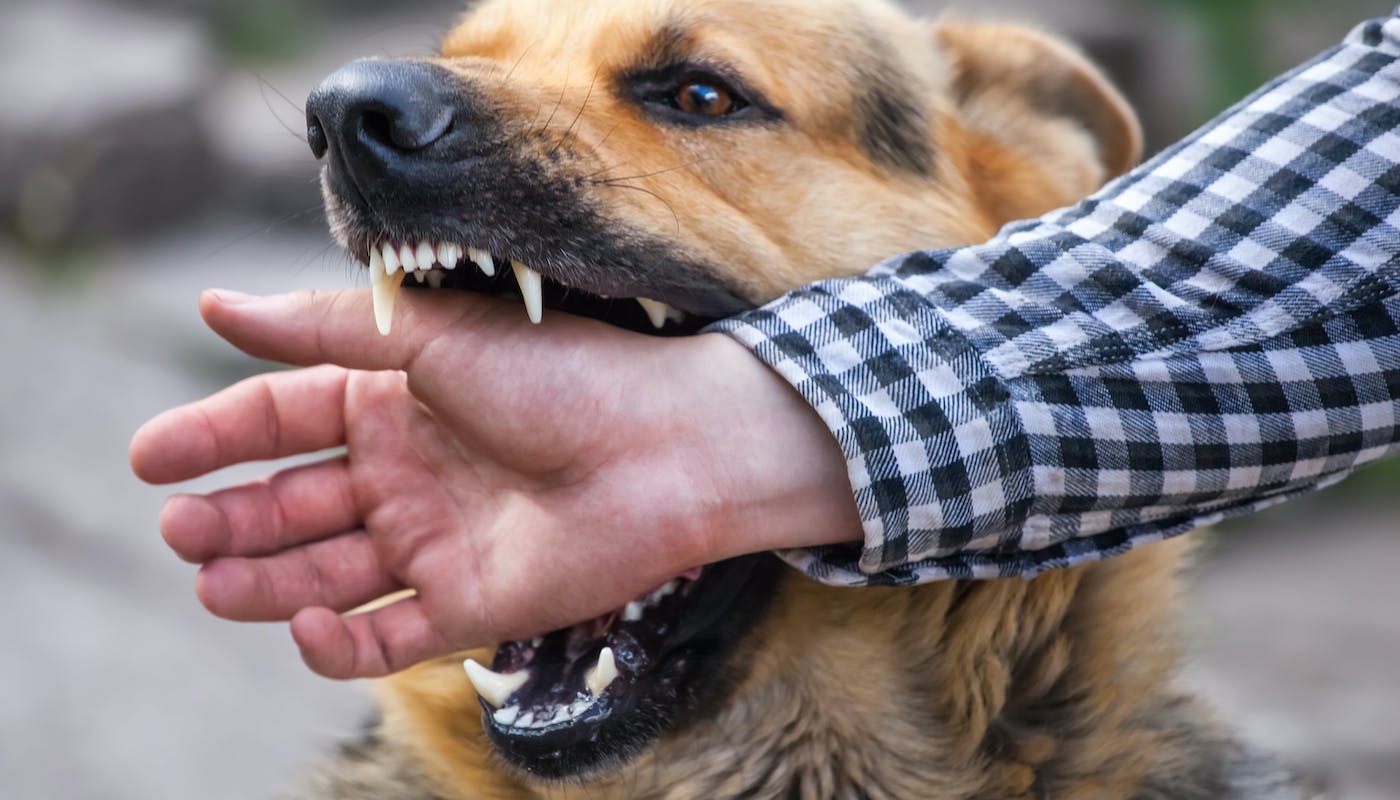How To Teach A Dog Not To Bite
Dogs bite around 4.5 million people per year, according to the Centers for Disease Control, and though some breeds are vilified more than others the truth is that any dog can bite. Usually, dogs bite because they are scared or acting in protection either for themselves or someone else. But there is plenty that dog owners can do to teach their dogs not to bite whether they’re a puppy or an older dog that hasn’t had effective training.
Puppies look cute and small, but their mouth is filled with 28 razor sharp teeth that can cause some damage to a human or other dogs. It’s important to start training your dog not to bite as early as possible, because play biting and the chewing that comes with a puppy’s teething can become problematic if they aren’t nipped in the bud.
Socialising Your Dog
One of the best ways to stop your dog from adopting a biting habit is by socialising them with as many different types of people and animals as possible. The more situations they encounter when they’re young, the less likely they are to develop negative attachments or anxieties – two things that can cause a dog to bite.
Decreasing your dog’s fear in turn decreases their chances of becoming aggressive. And with rescue dogs there can be many complex issues that their foster or adoptive owner will never know the truths of. In these situations, adult socialisation can take longer. But introducing anxious or aggressive dogs to new situations will eventually teach them that they are safe and have nothing to fear.
Be aware of your dog’s capabilities
There is a false belief that some dogs are more predisposed to biting than others, when the truth is that all dogs have it ingrained in their nature to lash out when they are scared. So don’t assume that your dog doesn’t need anti-bite training based purely on their size, breed, or usual temperament. Many dogs that attack humans or other dogs are known to have never bitten before.
Get your dog spayed or neutered
There is evidence to suggest that dogs are likely to be less aggressive after they have been spayed or neutered. It isn’t a fail safe guarantee that your dog will never bite, but the altered hormones do calm their temper.
Reward-based training
Teaching your dog good behaviour with positive reinforcement is a better way to train than to punish bad behaviour. Punishing a dog can work to make them more angry or scared, and therefore more likely to continue being aggressive. In fact, a study in 2009 found that dogs who are punished for bad behaviour rather than rewarded for good behaviour are 25% more likely to be aggressive.
Get to know your dog
Like humans, dogs display their emotions through their body language. You can use this in different ways to predict whether your dog is likely to become aggressive. Firstly, if a situation arises that you know makes them uncomfortable you will be able to spot their fear or anxiety in their demeanour and try to de-escalate. Secondly and more obviously, if you notice your dog’s hackles are up, teeth are bared, or ears are lying flat to their head then these are signs that your dog is unhappy and might bite.
If you’re unable to remove your dog from a situation, give it space to calm down and advise others to do the same. Growling is also another good indicator that a dog may become aggressive. This is why training dogs against growling is not advised, as it can lead to a dog biting ‘without warning’. Instead, try to teach them when and when is not an appropriate situation to growl.
Teach them “no”
If your dog bites or nips when they’re playing, immediately end their play. Don’t punish them, as they will see this as further attention. Simply stop the game to reinforce the fact that when they bite, the fun is over. Teaching them that no means no, and using clear withdrawal actions like tucking your hands into your armpits will help prevent bites.
Give them a distraction
Especially useful in puppy training, giving your dog an alternative item when you anticipate that they might bite will help them understand what they can and cannot bite or chew. If they’re anxious, this distraction could also help to calm their nerves.
Obedience training
If you’re struggling to stop your dog from biting, obedience training either at home or with a professional can help. The more obedient your dog is, the easier you’ll find it to control them. So get them used to your commands and keeping their focus on you as their leader will help to limit bad behaviour in different or new situations. It will also help your dog feel more confident, and therefore less likely to lash out at others.
Check your training has worked
To really know whether your anti bite training has worked, your dog will need to be exposed to new environments that might previously have caused them to bite or become aggressive. This exposure should be slow and deliberate, not a quick scare that will startle your dog and elicit their natural, animal reaction. If they manage to keep up the good behaviour in controlled new environments, then you know it’s worked. If not, more steps might be needed.
Front of the Pack’s Harmony supplement is a great way to soothe anxious or fearful dogs. It’s made with Ashwagandha that supports healthy stress responses in the body, L-theanine balances brain chemicals for a non-drowsy state of calm, and Relora alleviates nerves and cuts off anxiety at the source. These clinically-proven ingredients come in a handy one-time pack that you can take anywhere, with you. And in just 90 minutes, you’ll notice your dog’s anxiety is alleviated.
